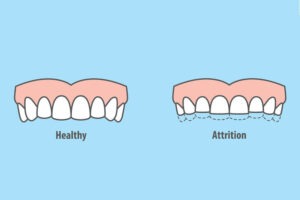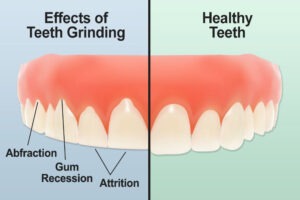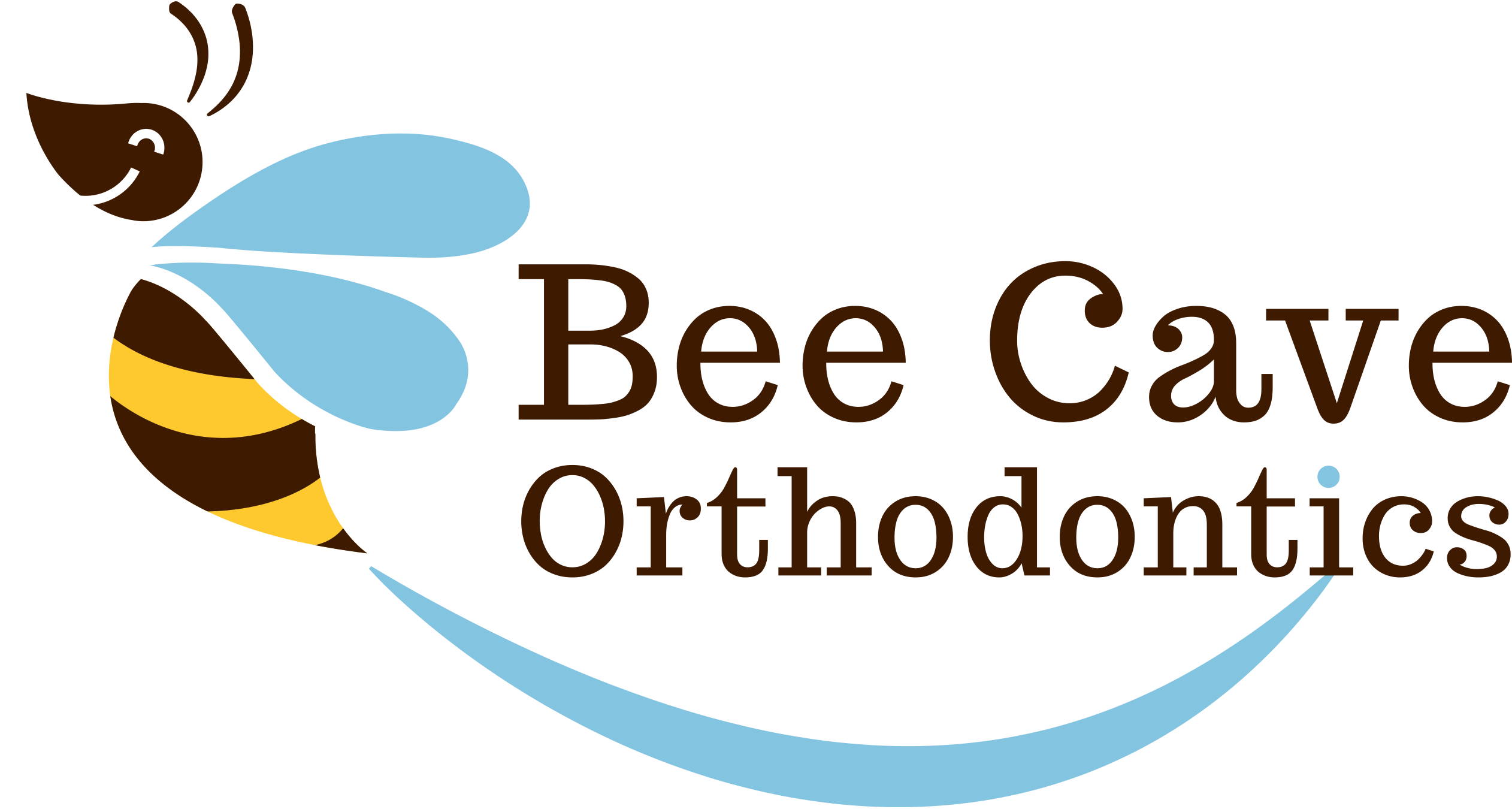Teeth grinding, or bruxism, is a common condition that affects people of all ages. It can have a significant impact on oral health, including the alignment of the teeth and the overall bite. In this blog post, we will explore the effects of bruxism on the bite and discuss how orthodontic treatment can help alleviate these issues.
What is Bruxism?
Bruxism is the medical term for grinding, gnashing, or clenching your teeth. It can occur during the day, but it is more common at night during sleep, known as sleep bruxism. This condition affects both children and adults and can lead to various complications if left untreated.

Causes of Bruxism
While the exact causes of bruxism are not fully understood, several factors may contribute to the development of this condition:
- Stress and Anxiety: Stress and anxiety are considered primary triggers for bruxism, especially during sleep. Grinding or clenching the teeth may be a subconscious response to stress, leading to bruxism episodes.
- Malocclusion: Malocclusion, or the misalignment of the teeth, can be a contributing factor to bruxism. The irregular positioning of the teeth can lead to improper alignment of the jaw, resulting in grinding or clenching.
- Sleep Disorders: Bruxism is often associated with sleep disorders such as sleep apnea. People with sleep apnea may grind their teeth as a way to open their airway during sleep, leading to bruxism episodes.
- Lifestyle Factors: Certain lifestyle factors such as smoking, excessive alcohol consumption, and the use of recreational drugs can increase the likelihood of bruxism.
- Medications: Some medications, such as certain antidepressants, can cause bruxism as a side effect. It is essential to discuss any potential side effects of medications with your healthcare provider.
- Genetics: There may be a genetic component to bruxism, as it tends to run in families. If a close family member has bruxism, you may be more likely to develop the condition.
- Other Medical Conditions: Bruxism can also be associated with other medical conditions such as Parkinson’s disease, Huntington’s disease, and gastroesophageal reflux disorder (GERD).
Effects of Bruxism on Bite

- Misalignment of Teeth: Bruxism can cause the teeth to wear down unevenly, leading to changes in the alignment of the teeth. This misalignment can affect the bite, causing discomfort and difficulty in chewing.
- Overbite or Underbite: In some cases, bruxism can contribute to the development of an overbite or underbite. An overbite occurs when the upper front teeth overlap significantly with the lower front teeth, while an underbite occurs when the lower front teeth protrude past the upper front teeth.
- Temporomandibular Joint (TMJ) Disorders: The excessive pressure exerted on the jaw joints during bruxism can lead to TMJ disorders. These disorders can cause pain and discomfort in the jaw joint and surrounding muscles, affecting the overall bite and jaw movement.
Orthodontic Treatment for Bruxism

Orthodontic treatment can help address the effects of bruxism on the bite and overall oral health. Here are some common orthodontic interventions for bruxism:
- Braces or Invisalign can be used to correct misalignment of the teeth caused by bruxism. By gradually moving the teeth into their proper positions, braces or Invisalign can improve the bite and alleviate discomfort caused by uneven wear.
- Retainers: Retainers are often used after braces to maintain the alignment of the teeth. They can also help protect the teeth from further damage due to bruxism by providing a barrier between the upper and lower teeth.
- Occlusal Splints: An occlusal splint is a custom-made mouthguard that is worn at night to protect the teeth from the effects of bruxism. It can help reduce grinding and clenching, leading to improved bite and less strain on the jaw joints. It can be worn during the day or the night, which they are often refer as night guards.
- Bite Adjustment: In some cases, orthodontists may recommend bite adjustment to correct bite problems caused by bruxism. This may involve reshaping the teeth or using orthodontic appliances to improve the alignment of the bite.
Bruxism can have a significant impact on the bite and overall oral health if left untreated. Orthodontic treatment can help address the effects of bruxism by correcting misalignment, improving the bite, and reducing the risk of TMJ disorders. If you suspect that you or your child may be grinding their teeth, it is important to consult with an orthodontist for a proper evaluation and treatment plan.
How to treat bruxism with Invisalign:
With over 25 years of experience as an orthodontist and 17 in Austin as Chief of Orthodontics at Dell Children’s Hospital, Dr. Adriana Da Silveira is a trusted expert in the field of orthodontics, renowned for her Invisalign expertise in treating even the most challenging cases. Dr. Da Silveira, in addition to her role at Bee Cave Ortho, has served as the Chief of Orthodontics at the Dell Medical Center for 15 years. Her advocacy for Invisalign has taken her to numerous national and international platforms, including the AAO annual meeting and the Invisalign Ortho Summit. Her dedication to ongoing education and research ensures that Bee Cave Orthodontics remains at the forefront of advancements in treatment, technology, and care approaches.
Bruxism and orthodontic treatment options: I
nvisalign treatment can make a difference in mitigating the effects of teeth grinding and Bruxism. Our night guards also make a excellent orthodontic solutions for bruxism and bite alignment. Book a free consultation at beecaveortho.com
